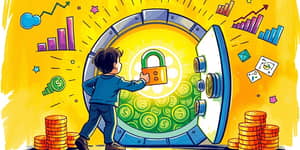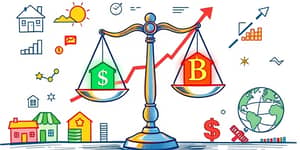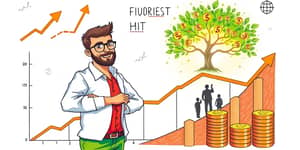Consumer debt can feel like an overwhelming burden, but with clear insights and actionable strategies, it becomes manageable. This guide explores the landscape of U.S. consumer loans, demystifies complex terminology, and empowers readers to take control of their financial futures.
Understanding the U.S. Debt Landscape
As of mid-2025, American households carry total household debt in 2025 of $18.20 trillion, marking a $4.6 trillion increase since 2019. Mortgages make up the largest share at $12.80 trillion, followed by auto loans ($1.64 trillion), student loans ($1.63 trillion), and credit card balances ($1.18 trillion). Despite high aggregate levels, the delinquency rate—4.3% of balances at least 30 days late—remains below peaks seen during past recessions.
Recent credit card delinquency stands at 3.05%, reflecting a rebound from pandemic lows. These numbers highlight the scale of borrowing and underscore the need for responsible loan management techniques to prevent financial hardship.
For many households, monthly debt payments can exceed 20% of net income, squeezing budgets and forcing difficult trade-offs. These pressures underscore the need for effective budgeting tools and accessible financial counseling to keep borrowers on track and avoid costly defaults.
Types of Consumer Loans Explained
- Secured loans: Backed by collateral like a home or vehicle, typically with lower interest rates.
- Unsecured loans: No collateral required, leading to higher APRs and stricter qualification criteria.
- Installment loans: Fixed payments over a set period, common for personal and auto loans.
- Revolving credit: Flexible borrowing up to a limit, such as credit cards or lines of credit.
- Specialty products: Options like payday loans, debt consolidation, and credit-builder loans.
Understanding these loan categories clarifies how interest accrues and what repayment structures to expect. Secured loans often reward borrowers with lower rates, whereas unsecured loans demand higher credit scores and impose steeper penalties for missed payments.
Some lenders offer niche products such as home equity lines of credit and payday loans. While home equity loans provide access to low-rate financing secured by property, payday loans carry annual percentage rates well into triple digits, posing significant risks of cyclical indebtedness.
Recent Trends and Key Statistics
Consumer borrowing patterns shifted dramatically during and after the COVID-19 pandemic. Unemployment peaked at 14.8% in April 2020, prompting a surge of nearly $800 billion in new consumer debt through emergency funding lapses and deferred payments.
By Q2 2025, mortgage debt rose to $12.94 trillion, while credit card balances climbed from $890 billion in early 2020 to $1.18 trillion. Personal loans now carry APRs between 6% and 36%, and the average unpaid balance per credit card holder is $7,321. These figures demonstrate both growing reliance on credit and the importance of mindful borrowing.
Additionally, the Federal Reserve’s series of rate hikes since 2022 has driven up variable-rate loan payments, particularly on credit cards and adjustable-rate mortgages. Consumers with revolving balances now face unpredictable payment increases that can strain household finances.
Risks and Delinquencies
Delinquency rates provide a barometer of consumer stress. Auto loan delinquencies for subprime borrowers have edged above historical medians, driven by longer loan terms and rising interest rates. Mortgage defaults remain relatively low, but student loan delinquencies hover above 10% in certain cohorts, reflecting the substantial share of household debt that this category represents.
Key risk factors include high debt-to-income ratios, variable interest rates tied to the prime rate, and inflationary pressures on living costs. Recognizing these dangers early can inform strategic decisions—such as opting for a fixed-rate agreement or prioritizing high-interest balances during repayment.
During the Great Recession, credit card delinquencies peaked near 7%, illustrating how economic downturns amplify debt stress. Similar patterns emerged during the pandemic, reminding lenders and regulators to build resilience into credit underwriting standards.
Strategies for Managing and Reducing Debt
Proactive debt management relies on clear planning and disciplined execution. Below are proven approaches to regain financial stability and reduce overall interest expenses:
- Implement a debt snowball or avalanche approach, prioritizing balances by size or rate.
- Consolidate high-rate debts into a lower-interest consolidation loan to streamline payments.
- Negotiate with creditors to adjust payment schedules or secure hardship programs.
- Use credit-builder loans to rebuild credit after past delinquencies.
- Build an emergency savings cushion to avoid future reliance on high-cost credit.
By combining these strategies, borrowers can tackle balances more efficiently and cultivate healthy financial habits, ultimately reducing stress and freeing up resources for other priorities.
Patience and consistency are key: small, regular payments reduce principal balances over time and gradually improve credit scores, unlocking better loan terms in the future.
Demographics and Driving Factors
Debt is not evenly distributed across the population. Approximately 90% of Americans hold some form of debt, with the highest prevalence among those aged 30–59, women, Black households, and parents supporting children. The early pandemic saw temporary relief in credit card balances due to federal stimulus, but borrowing quickly rebounded as aid programs expired.
Inflation and rising interest rates have disproportionately affected vulnerable groups, forcing many to rely on revolving credit to meet basic expenses. Recognizing these demographic trends can guide targeted financial education and policy initiatives to support those most at risk.
Parents supporting children under 18 often see elevated borrowing to cover education and childcare, while Black and Latino communities experience disproportionate impacts due to systemic income disparities and limited access to low-cost credit.
A Path Forward: Empowered Borrowing
Conquering consumer loans begins with knowledge and intentional action. Before taking on new debt, borrowers should:
Evaluate personal cash flow to ensure sustainable repayment capacity.
Compare loan offers, focusing on APR, term length, and fees. Prioritize fixed-rate options when anticipating rate hikes, and be wary of predatory lenders offering payday loans with exorbitant costs.
Regularly review credit reports to spot inaccuracies and address them quickly. Establishing a realistic budget and fostering an emergency fund can reduce dependence on credit and improve long-term financial resilience.
By approaching debt with curiosity and resolve, every borrower can rewrite their financial story. Armed with knowledge and action, the journey from indebtedness to independence becomes not only possible but profoundly empowering.
References
- https://www.debt.org/faqs/americans-in-debt/demographics/
- https://www.debt.org/credit/loans/
- https://www.federalreserve.gov/publications/April-2025-financial-stability-report-Borrowing-by-Businesses-and-Households.htm
- https://www.experian.com/blogs/ask-experian/types-of-loans/
- https://www.lendingtree.com/credit-cards/study/credit-card-debt-statistics/
- https://www.wolterskluwer.com/en/expert-insights/understanding-the-types-and-sources-of-consumer-credit
- https://www.newyorkfed.org/microeconomics/hhdc
- https://www.fscb.com/blog/what-is-a-consumer-loan










